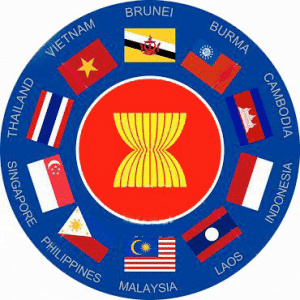Author: Shankaran Nambiar, MIER
The ASEAN-India Free Trade Agreement (AIFTA), which has been concluded after protracted discussions,
is a strategic event that holds promise for both parties. The agreement
is noteworthy as it completes ASEAN’s links with Asia’s two major
emerging powers and two of the fast growing economies in the world,
China and India. The FTA signals India’s readiness to contribute to the
development of the region, and seek benefits from the process. There is
no doubt that ASEAN welcomes India’s involvement in the region. A quick
scan of recent trade figures, precisely because they lack lustre,
suggests that India is looking beyond the present in concluding this
agreement. This gives cause for optimism.

India’s trade with ASEAN has not been spectacular. India has been
running a deficit with ASEAN in the last decade, and the deficit has
been growing. India’s trade deficit with
ASEAN has increased from about US$2 billion in 1998 to around US$15
billion in 2007. The widening trade deficit is a reflection of India’s
trade trends with ASEAN. In 2004-05, India’s total imports from ASEAN
were worth roughly $9 billion, with exports amounting to $8 billion. In
2007-08, total imports ($22 billion) continued to exceed exports ($16
billion), with a trade deficit around $6 billion. But total trade
between the two has been increasing rapidly.
India has been willing to extend tariff reduction commitments on 89
per cent of its tariff lines through the AIFTA. India has also
signalled its intention to lower tariffs on highly sensitive items like
palm oil, tea, coffee and pepper. The import duties on these
commodities will be lowered to around 40-45 per cent by 2019. The
stance that India has taken on these agricultural commodities, in the
face of domestic resistance, indicates the store the government puts on
the agreement. It is also an indication of India’s long-term economic
interest in ASEAN and the synergy that it envisages it could develop
with the region over time.
In the last decade, India has not had trade surpluses with most of
the ASEAN member countries. Notable exceptions are Cambodia, Laos,
Brunei, the Philippines and Vietnam. While India may want to expand its
trade with these countries, there is little doubt that, as India opens
its economy, and as its business interests expand, there is much scope
for its companies to grow in this part of the world. If, at this point
in time, India does not evince adequate interest in ASEAN, India may
lose market share to China. India can ill afford to suffer a late-mover
disadvantage.
India is keen to establish its commercial presence in ASEAN. India
has an active interest in exporting chemicals, pharmaceuticals and
refined petroleum products. These are areas where India may choose to
explore possibilities in ASEAN. ASEAN countries are an important base
for for export-oriented manufacturing, particularly in electrical and
electronic products, automobiles and related equipment, as well as
other light manufacturing goods. Indian companies could compensate for
their current lack of competitiveness in these areas by forging
partnerships with ASEAN firms. The agreement will make access to ASEAN
markets easier; it also provides a platform for Indian companies that
want to engage with ASEAN companies by offering their expertise and
technological capabilities in exporting to third country markets.
Significant outcomes can be expected, out of the AIFTA, via trade in
services and investment. Indian business is coming of age, and there is
evidence that the increasing maturity is accompanied by growing
confidence in investing globally. The larger Indian multinational
companies have already begun to spread their wings in the developed
economies. ASEAN is likely to be a favoured target for the less
ambitious (and more cautious) companies. Aside from manufacturing,
chemical and pharmaceutical products, ASEAN countries offer
opportunities in the services sector. The horizons here are broad and
deep. Obvious candidates are banking and financial services, with
initial forays already being made into Singapore. But the list could
easily extend to insurance, outsourcing, tourism and logistics. India
could leverage on its massive Muslim population (160 million, and the
third largest in the world) to connect with Islamic banking and finance
and the halal food market.
Perhaps the most exciting aspect of India’s engagement with ASEAN is
its importance to establishing a cooperative Asian economic community.
Indian cooperation with ASEAN in science, technology, research and
development, and capacity building can provide a foundation for broader
cooperation in building an Asian economic community. As India joins the
club
of major players who have signed FTAs with ASEAN (Japan, China, Korea,
Australia and New Zealand), it clears the path for a more integrated
Asian economic community.
Shankaran Nambiar is Senior Research Fellow at the Malaysian Institute of Economic Research


